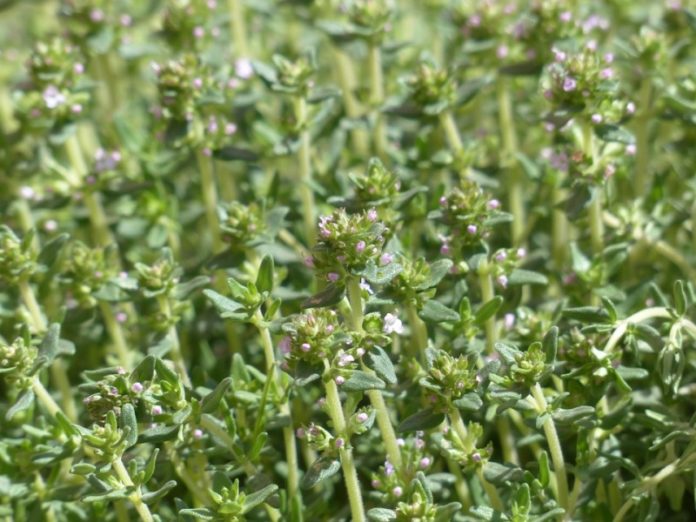

- GROWING THYME FROM SEED OUTDOORS HOW TO
- GROWING THYME FROM SEED OUTDOORS FULL
- GROWING THYME FROM SEED OUTDOORS PLUS

Italian Genovese Basil ( Ocimum basilicum) is a tender annual herb that grows as an attractive bushy, upright plant with broad, smooth, shiny green leaves. Here are some of my favorite culinary herbs to grow year after year: The blooms are also beautiful and attract butterflies and other beneficial insects to the garden. Herbs are a great addition to the garden and can be grown in a designated herb plot, among your other vegetables, intermingled in your flowerbed, or even in containers. Step 10: Transplant: Once your herb seedlings are hardened off, they are ready to be moved to their permanent growing location in containers or the garden.Step 9: Harden off: Begin hardening off your herb seedlings before transplanting them into the garden to allow them to acclimate to outdoor conditions: How to Harden Off Your Seedlings Before Planting.Once the herb plants outgrow their pots, you can transplant to larger containers. Step 8: Repot if needed: Transplant the herbs to larger pots once they outgrow their original containers.Choose the strongest plant in each container and remove the extras by snipping them at the soil level. Step 7: Thin the plants: If more than one seed sprouted per container, you will need to remove the extra plants so the seedling can grow strong and healthy.Follow the instructions on the label for best results. Start with half-strength, organic liquid fertilizer such as fish fertilizer or worm casting tea. Step 6: Fertilize: Begin fertilizing the seedlings once true leaves sprout.When the seeds sprout, remove the humidity dome and place the trays under lights. Mist with water when the soil surface has dries out and cover with the humidity dome until the seeds germinate. Step 5: Water: Keep the soil moist but not soggy.Use a humidity dome to keep in moisture, and place the containers in a warm location. Cover the seeds with soil and mist the surface with water. Step 4: Sow seeds: Poke holes in the soil at the recommended depth, and drop 2 or 3 seeds into the holes.Starting seeds in fresh seed starting mix will help you grow healthy seedlings because you are less likely to introduce pathogens that may cause disease in young plants. Step 3: Seed starting mix: Fill your containers with pre-moistened seed starting mix to within 1/2-inch of the top of the container.Here are some ideas: 8 Recycled Seed Starting Containers for Gardening Step 2: Containers: You can use seed-starting flats, peat pots, toilet paper rolls, newspaper pot, or any reused container with a few drainage holes poked into the bottom.This simple DIY seed-starting rack with grow lights is perfect for starting herbs from seeds indoors.

GROWING THYME FROM SEED OUTDOORS PLUS
Here are seven easy herbs to start from seed, plus tips for growing herbs.įresh herbs add delightful flavor and fragrance to foods. An extremely versatile herb, coriander leaves are suitable for use in potpourri and the stems can be cooked in soups and with beans.Herbs can be grown in an herb garden, vegetable garden, flowerbed, and even in containers. Fresh lower leaves taste delicious in curries, salads, stews and also work well as a garnish. You can also collect the seed when it turns brown just before it drops, dry it, and store whole in air-tight containers.Ĭulinary Uses: Add coriander seeds to tomato chutney, pickles, ratatouille, curries, soups, sauces, vegetable dishes, apple pies, cakes and biscuits. Harvesting: Pick the young leaves at any time for immediate use. However, if you also grow fennel, keep these herbs well separated or it will reduce the number of seeds your fennel produces. For fresh leaves all summer long, coriander ‘Confetti’ has distinctive carrot-like leaves, a lovely flavour, and matures quickly making it ideal to use as a cut-and-come-again crop. Simply direct sow the seeds outside in late March through to the end of June.
GROWING THYME FROM SEED OUTDOORS FULL
Grow coriander in full sun in well-drained soil. Image: Herb Seed ‘Coriander’ from Suttons Coriander leaves are refreshing and citrusy


 0 kommentar(er)
0 kommentar(er)
